Middle African Countries
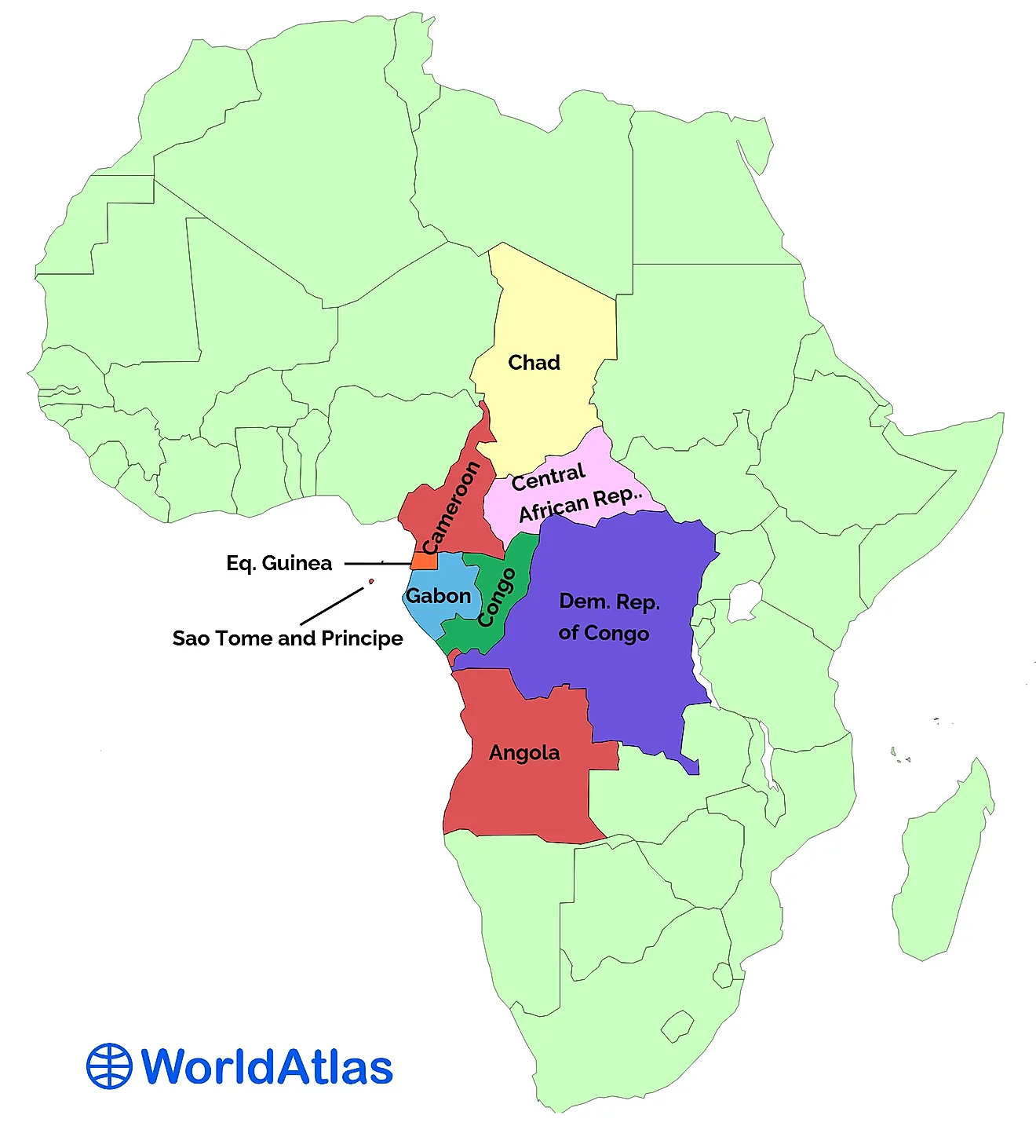
- Middle Africa consists of 9 countries.
- The Democratic Republic of the Congo is the most populated country in Middle Africa, while Sao Tome and Principe is the least populous.
- Middle Africa contains one island country, Sao Tome and Principe. It also contains two landlocked countries, Chad and the Central African Republic.
- About 184 million people live in Middle Africa.
Middle Africa is a subregion of Africa. As its name implies, Middle Africa is situated in the central part of the African continent. The subregion consists of 9 countries. Chad is the northernmost country in Middle Africa, while Angola is the southernmost. The western part of the subregion faces both the Atlantic Ocean and West Africa. North Africa lies to the north of Middle Africa, while East Africa is situated to the east. Southern Africa is located south of the border between Angola and the Southern African countries of Namibia and Botswana. The Democratic Republic of the Congo is the largest country in Middle Africa, while the island country of Sao Tome and Principe is the smallest. Sao Tome and Principle is the lone island country in Middle Africa. Two of the subregion’s countries, Chad and the Central African Republic, are landlocked countries.
Countries Of Middle Africa
- Angola
- Cameroon
- Central African Republic
- Chad
- Congo
- Democratic Republic of the Congo
- Equatorial Guinea
- Gabon
- Sao Tome and Principe
Demographics Of Middle Africa
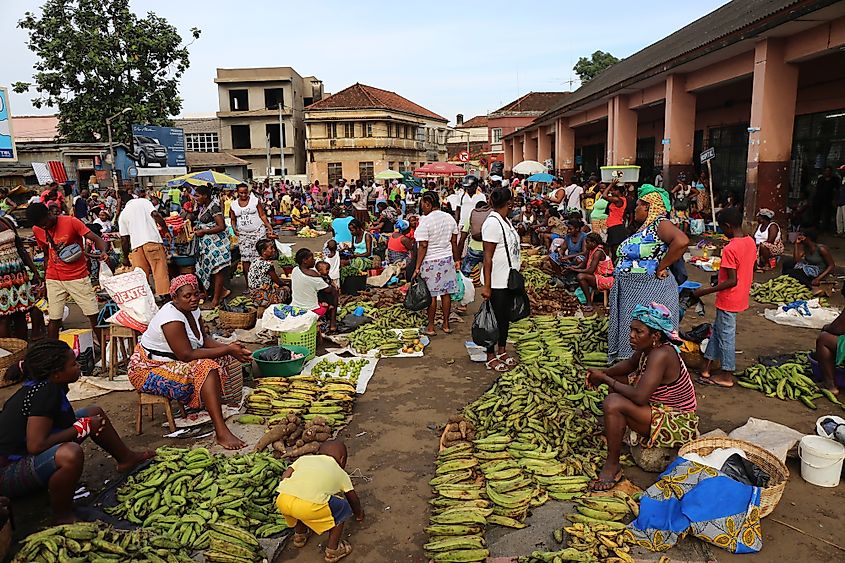
Middle Africa is home to an estimated 184 million people. The most populous country in the subregion is DR Congo, which has a population of more than 89 million. In contrast, the island country of Sao Tome and Principe is the least populous, with a population of about 219,000 people. Middle Africa includes some of the continent’s biggest cities. Kinshasa, the capital of DR Congo, has an estimated population of 7.785 million, and is the second most populous city in Africa as a whole. Other large cities in Middle Africa include the Angolan capital, Luanda, the southern DR Congolese city of Lubumbashi, and the Republic of Congo capital, Brazzaville, all of which have populations in excess of 1 million.
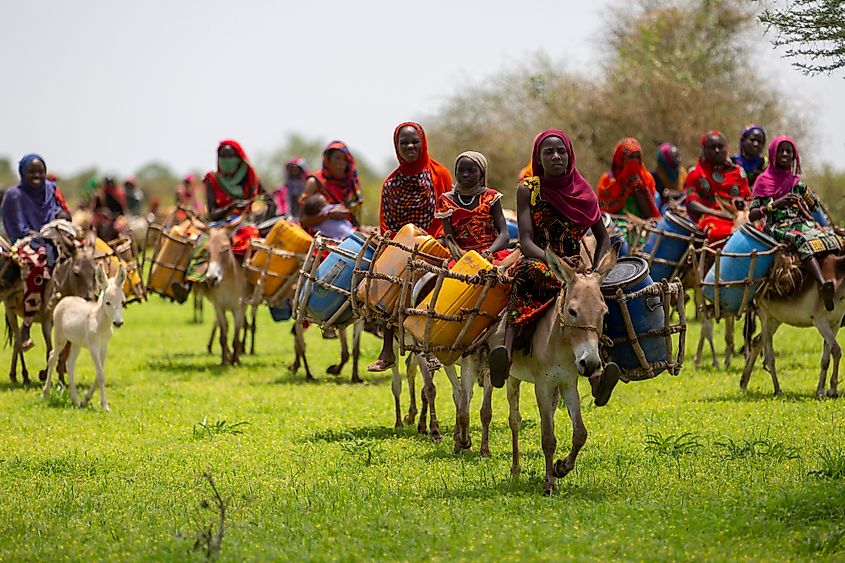
Like the rest of Africa, Middle Africa has a multitude of different ethnic, religious, and linguistic communities. DR Congo alone has 250 ethnic groups. One of the largest groups in both DR Congo and Middle Africa as a whole are the Kongo, for whom the Congo River and the two Congo countries are named, though to differentiate the people from the geographic terms, the name of the people is spelled with a K. The Kongo live mostly in close proximity to the Lower Congo River, the surrounding area of which includes parts of both Congo countries, as well as part of northern Angola. This area was once the domain of the Kingdom of Kongo, which was founded towards the end of the 14th century.
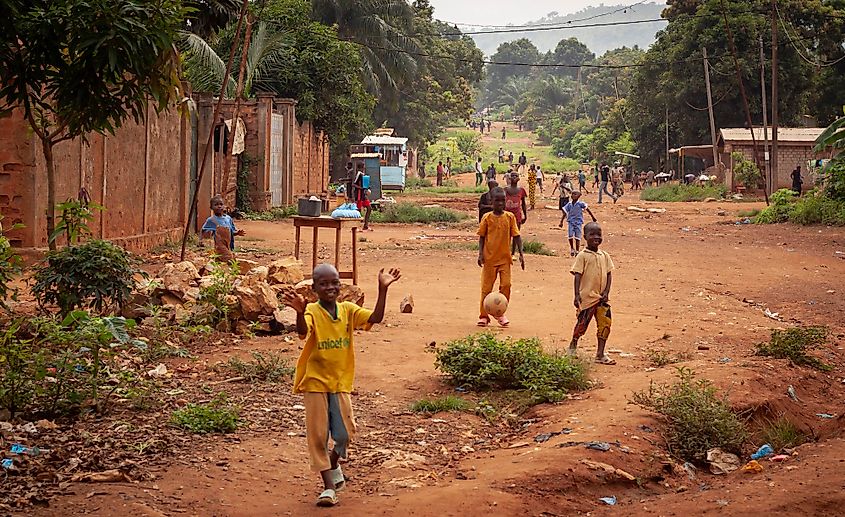
Another large ethnic group who also live in DR Congo are the Luba, though unlike the Kongo, they inhabit the central part of the country. There were approximately 5.59 million Luba at the close of the 20th century. Further to the east are the Hutu, who inhabit the Great Lakes region of Africa. They live adjacent to their kinsmen in the East African states of Rwanda and Burundi. There are also members of the Tutsi ethnic group in the same area. In 1994, an ethnic conflict between the Tutsis and Hutus resulted in a mass genocide of Tutsis in Rwanda.
Further south are the Ovimbundu, who are the largest ethnic group in Angola, and are located mostly in the Benguela Highlands, a region of wooded savanna located about 100 km from the coast. They numbered approximately 4 million by the end of the 20th century. The Mbundu are another large ethnic group in Angola. They mostly live in the country’s northwest, north of the Kwanza River. At last count, they numbered in the area of 2.4 million.
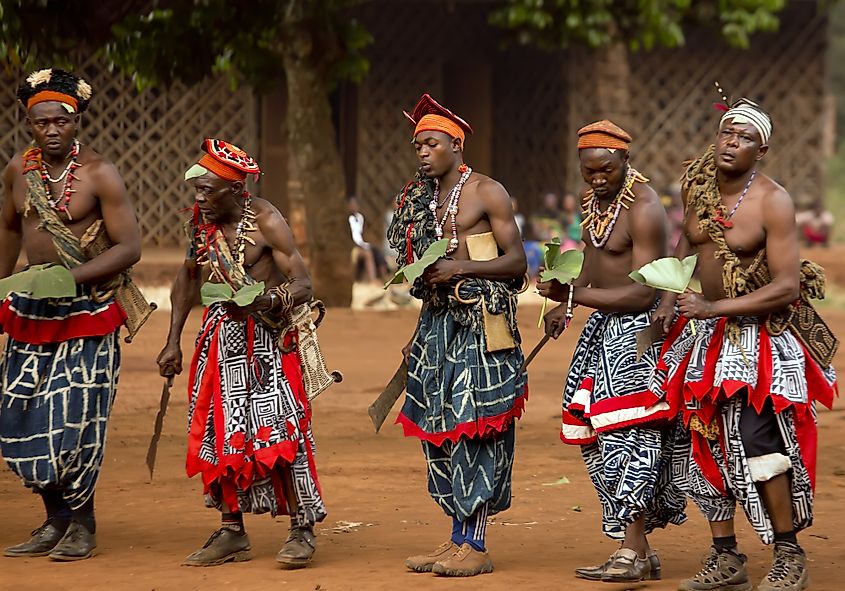
Further to the north are the Zande, who live in parts of DR Congo, the Central African Republic, and the East African country of South Sudan. They number between as little as 1 million and as many as 4 million. Even farther north are the Sara, who inhabit southern Chad, and are that country’s largest ethnic group. In contrast, northern Chad is populated mainly by Arabs.
Living in a large chunk of the western part of Middle Africa are the Fang people. They inhabit southern Cameroon, Equatorial Guinea, and northern Gabon. In recent years, the Fang have migrated to the Equatorial Guinean island of Bioko, where the country’s capital city, Malabo, is located. This has caused resentment among members of another ethnic group, the Bubi, who are Bioko’s indigenous inhabitants. Indeed, the Fang now outnumber the Bubi on their own island.
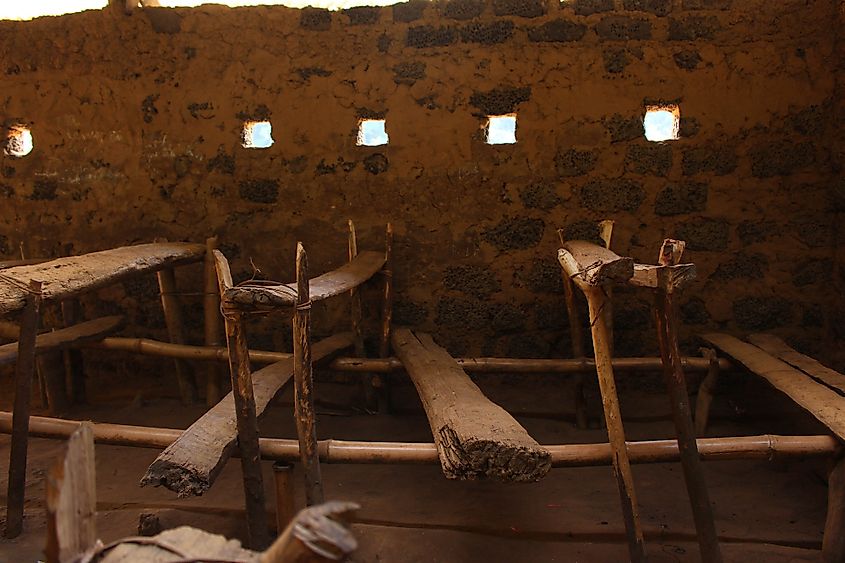
The people of Middle Africa speak a myriad of different languages, most associated with specific ethnic groups. The official languages of the subregion’s countries, however, are all European languages left over from the colonial era. Portuguese, for example, is spoken in the former Portuguese colonies of Angola and Sao Tome and Principe. Middle Africa also contains Africa’s only Spanish-speaking country, Equatorial Guinea. French is spoken in both the Republic of the Congo and DR Congo, as well as Gabon, the Central African Republic, and most of Cameroon. Cameroon is actually a bilingual country, in which most of the people speak French, but people who live in a small northern part of the country speak English. This is due to the fact that north and south Cameroon were once separate colonies. The north was controlled by the British and the south by the French. Recently, violent conflict has ensued between the two linguistic communities, as some English speakers seek to create a separate, English-speaking country.
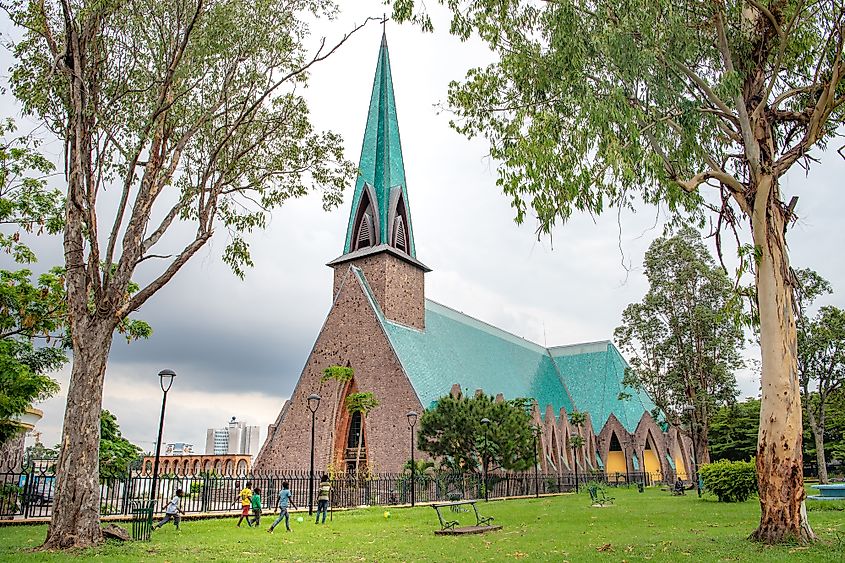
Most of Middle Africa is overwhelmingly Christian. The exceptions are part of northern Cameroon and the northern part of Chad, where most of the population is Muslim. There is also a sizeable Muslim community in the Central African Republic. Some religious conflict has been known to take place between Christians and Muslims in Middle Africa, most notably in Chad and the Central African Republic.
Economy Of Middle Africa
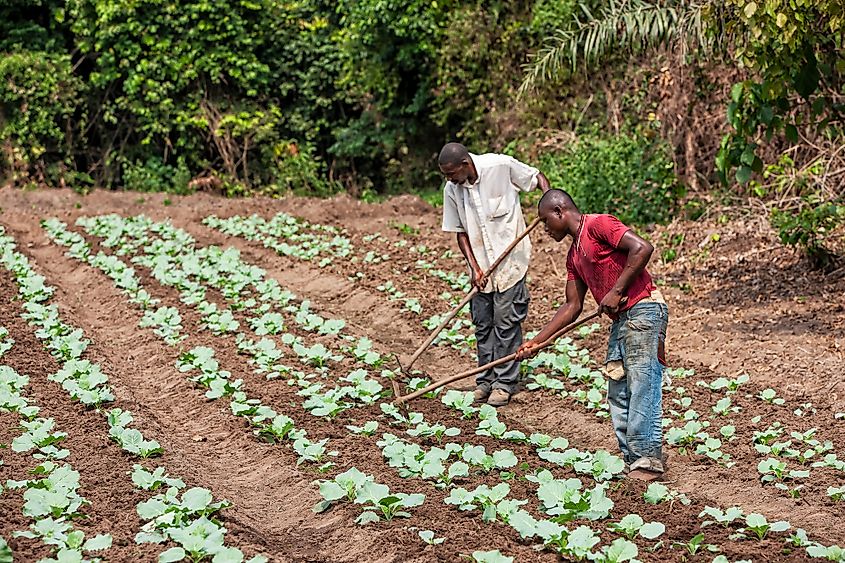
All the countries of Middle Africa are classified as developing countries. DR Congo has the subregion’s biggest economy, while Sao Tome and Principe has the smallest. The poverty and lack of development in Middle Africa are not for a lack of natural resources. Quite the contrary, in fact. Most of the countries in Middle Africa have an abundance of natural resources that have not been sufficiently managed. Chad, the Republic of Congo, Gabon, Equatorial Guinea, and Angola, for example, all have plentiful sources of oil. Meanwhile, DR Congo has the potential to be one of the richest countries in the world, as it is home to almost every natural resource one can imagine, including fresh water, fertile soil, diamonds, gold, copper, tin, and a mineral named coltan, which is vital material used in mobile phones. But, as is the case with many resource-rich countries in Africa, colonialism, slavery, and corruption have stymied development.
Middle African Countries
| Rank | Country | Population | Total Area in km2 |
|---|---|---|---|
| 1 | Angola | 31,825,290 | 1,246,700 |
| 2 | Cameroon | 25,876,380 | 475,440 |
| 3 | Central African Republic | 4,745,190 | 622,984 |
| 4 | Chad | 15,946,880 | 1,284,000 |
| 5 | Congo | 5,380,510 | 342,000 |
| 6 | Democratic Republic of the Congo | 86,790,570 | 2,344,858 |
| 7 | Equatorial Guinea | 1,355,990 | 28,051 |
| 8 | Gabon | 2,172,580 | 267,667 |
| 9 | Sao Tome and Principe | 215,060 | 964 |











